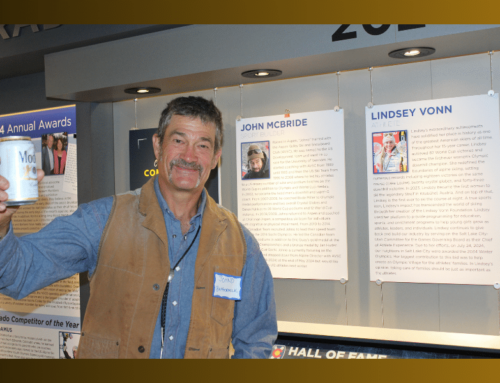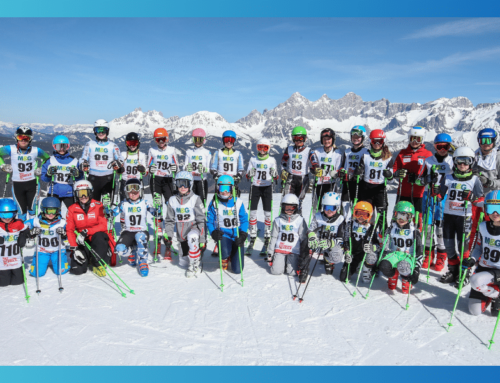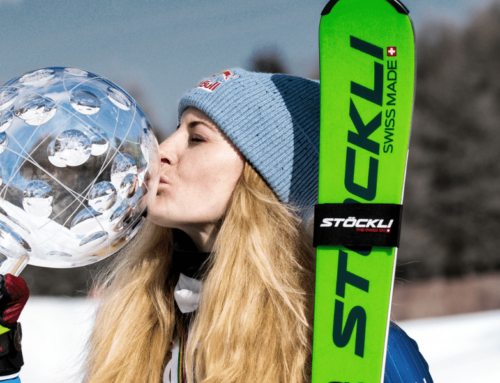The current and future state of World Cup downhill – Part I
Keeping the excitement and true nature of downhill and super-G racing while ensuring skiers’ safety can be a delicate balancing act. FIS Race Director Hannes Trinkl discusses with Ski Racing Media the new FIS philosophy on course setting, the 2022 speed season and safety considerations for 2023. This is the first piece of a two part series, the second of which will run tomorrow.
Austrian Hannes Trinkl, who has been the International Ski Federation (FIS) race director for men’s speed races since the 2014-15 season, is in charge of the course setting in downhill, as well as controlling the race-hill surface, overseeing the shaping of jumps and terrain plus safety installations at all World Cup, World Championship and Olympic downhill and super-G competitions for the male racers. For Trinkl, safety is the number one priority:
“We want to bring the boys to the end safely,” he states during an interview with Ski Racing at the Kvitfjell World Cup competitions in early March. A few racers walk by and greet him as we talk, and the friendly exchange between the racers and Trinkl shows mutual respect and appreciation.
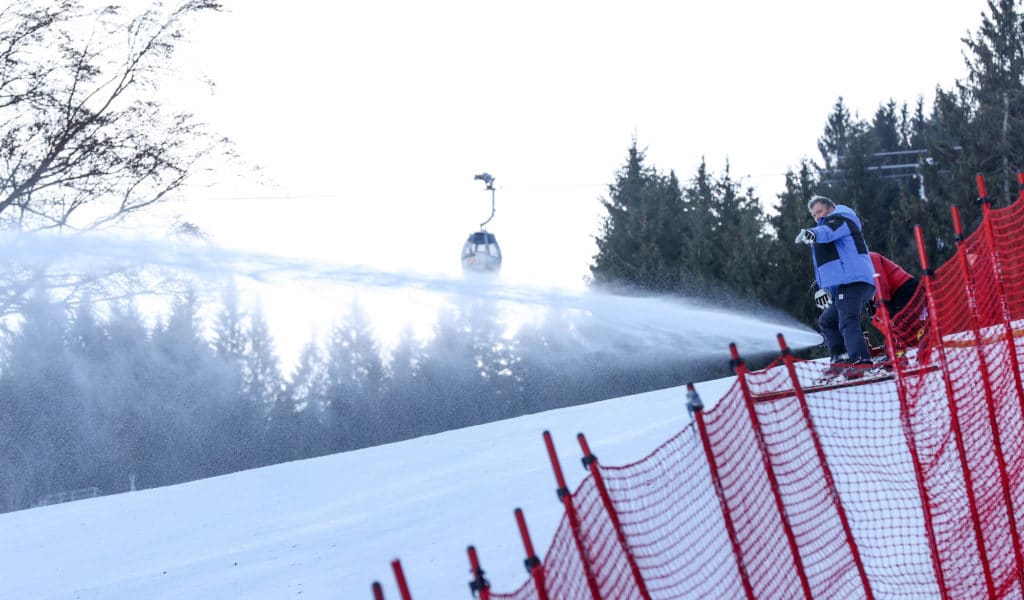
Trinkl does not want to move away from what makes a downhill course an actual downhill, but he says there are changes being made in FIS’ approach to course setting and hill preparations in order to ensure the racers’ safety:
“We changed the philosophy of course sets a little bit, so now we try to work with more terrain and some hanging turns, where you have to be on your edges more and harder on your skis, which reduces speed immediately,’’ Trinkl says. When creating courses and terrain that bring the racers more out of their downhill tuck, the increased aerodynamic drag will also reduce their speed. This will, of course, have to be done in a safe way that fits with the nature of each race hill. The approach to surface preparations is also changing somewhat, according to Trinkl, allowing some course sections to be a little bit rougher. However, this approach cannot be applied to the sections with the highest speeds.
Adding more turns that slow skiers down is not an option:
“Too many turns is also not so safe. That creates more G-force and then it immediately becomes more dangerous. So the best thing to do is to work with the terrain. But this is an evolution that will take a couple of years.”
“We don’t want to lose the base of downhill. We want to work with terrain, to bring them out of the downhill position, and it’s safer to reduce the speed. The boys like it and I do too. We haven’t been so lucky with snow this year. It has been very warm, so we can’t have the terrain that they want. So we have to live with what we have on the slope, and all our organizers try to make the best out of it.”
FIS and sports scientists now work together to find good solutions for the larger jumps in World Cup downhill and super-G courses. Data and experiences from previous seasons add knowledge and evolve the process towards a better overall race experience.
Courchevel experiences
Most recently, the brand new Eclipse downhill and super-G venue was put to the test during the 2022 World Cup Finals speed events on March 16 and 17 in Courchevel, France. The men and women raced on the same downhill course, with the men starting a bit higher up on the mountain. The 2023 FIS Alpine World Ski Championships men’s downhill and super-G competitions will take place on the Eclipse in February next year, while the women’s championship speed events will be run in nearby Méribel. Trinkl shared his impressions of the course with Ski Racing in a telephone conversation from France a few hours after the World Cup Finals downhill races:

“It was okay for Finals. But for World Championships we have to make a few adjustments, and then I hope we’ll have really nice World Championships here.”
On the top, the course will be set a little straighter over the Zenith jump, compared to the Finals. “The jump profile is good, but we are on a turn on this jump, and if you have not really finished the turn before, then the jump gets just a little more air, so that’s the reason why we will go straight down next year.
The rest of the upper section down to the super-G start will stay the same. From there on, there will be adjustments. The lower part, especially, will be opened up with more downhill-like turns and a little more speed,” Trinkl explains.
He is satisfied with the jumps, including the Jockey jump where the racers flew 40-50 meters. “The second jump is really big, but the landing is so nice, even if you’re jumping 10 meters more. It’s no problem. We’ll leave this one as it is. It’s a really nice profile. It worked out well.”
Overall, Trinkl is excited about the Eclipse race hill before the 2023 World Championships: “It’s a really nice downhill. It has fast turns at the top, nice big jumps, but no dangerous jumps, a really nice profile, and a really technically steep part in the lower part.” The race director has been involved and present since the start of the building of the Courchevel course and its safety installations. He is happy with the work done at the new venue: “They did an amazing job! A really modern downhill, so everything – also, safety-wise, it’s really nice.”
The 2022 season
When summarizing the men’s speed events for the 2021-22 World Cup, Trinkl brings us through this winter’s race venues prior to Courchevel:
“Lake Louise always depends on snow a little bit. It’s the first downhill on the calendar. They try to make snow as early as possible, but sometimes they struggle a little bit. This year we have been really lucky with the snow, so we built a lot of terrain there and it helps us reduce speed and make it more exciting and challenging for the boys.
Beaver Creek is always one of the nicest and fastest downhills. It is easy to find a course set.
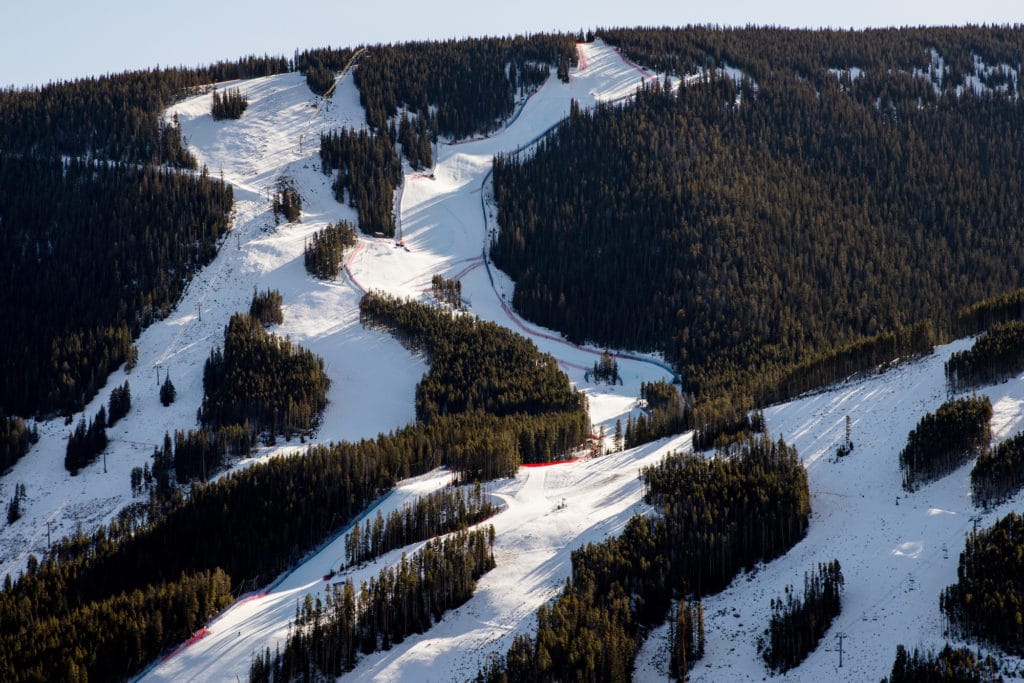
It’s also easy to control the speed at Val Gardena. The only thing that we want to adjust a little bit is the finish jump at Val Gardena. It’s a really long jump. It worked okay in training, but it was on the edge at the race.
Bormio is always a tough downhill. The start is really steep, and we have a lot of terrain there. This is a really demanding, tough downhill and we try to keep it like it is. It’s challenging in itself, so we don’t have to change it. The 2026 Olympics will be there, so we’ll try to find a little more space up in Canalino. It’s on the top section. It’s really fast there, and in the next turn we will try to create more space in the future to make it safer and allow more possibilities to slow down the speed a little.
Wengen was one of our best races this winter. The terrain worked really nicely, and we got a lot of snow. The preparation of the snow and the quality of the snow was very high and not aggressive, so, really good.
At Kvitfjell, it’s not so difficult to find a nice course. It’s nice terrain, a nice hill, and nice for downhill,” Trinkl says.
We know Kitzbühel is always a challenge. It’s a tough downhill. We changed the course set a little bit. We opened a little bit before the Hausbergkante, but then we tried to slow them down to avoid the crashes like we had with Cochran-Siegle. And now we think about what we can do to also reduce the speed down the finish jump from 140 to 130 (km/h). We have to find a solution there, and we are working on it.
Navigating new terrain
While the traditional World Cup downhill courses to a great extent have worked well during the 2021-22 season, some adjustments will need to be made, according to Trinkl, and some have already been made. The most debated course changes during the 2022 World Cup season were changes made to the legendary course in Kitzbühel. Trinkl describes the changes, which he points out are part of an ongoing process to find the best solutions:
“Kitzbühel is for sure very special. The most crashes we have had there have been on the last section. We want to have a nice sport, but we don’t want to have bad crashes. At the top, we have really nice terrain and enough space for the racers to have control,” which is not the case further down the mountain. As Trinkl explains: “That’s why we changed the terrain a little bit after the Hausbergkante, filled out the compression, and tried to make it more like a negative turn, so that the terrain cannot help them to turn in a very short, sharp turn. Now we have longer turn there, and the terrain is really leaning out.” The skiers, then, have to work harder in this turn’s new terrain and be more on the edges of their skis, which reduces their speed.
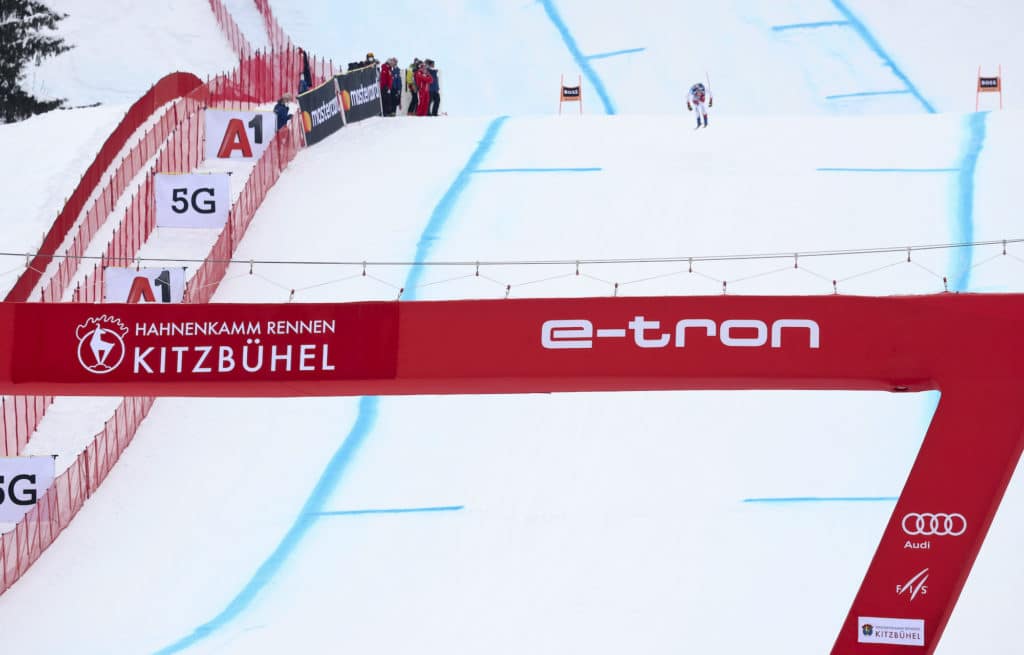
We’ve avoided crashes like we had from Cochran-Siegle in 2021 at the start of the traverse, after the compression. It is for sure safer there now. And also, the turn before, where we had the really bad crashes from Svindal and Reichelt in 2016, has been working really well. We have to adjust a little bit, but for now we’ve found a base.”
In addition to filling in the compression after the Hausbergkante before the 2022 Hahnenkamm race, the A-net was moved further out in the turn there in order to create more space. “That worked really, really well. For sure, the course was not perfect this year, but for next year I hope we will find a better one, or we’ll adjust a little,” Trinkl says.
With the work done below the Hausbergkante, adjustments were also made above the famous Hausberg edge for the 2022 Hahnenkamm race:
“Now the Hausbergkante jump itself is bigger, and we opened the gate before the entrance to this Hausberg jump. So there we have a little more speed, and we knew we could slow them down after the jump.” The combination of the new line into the jump, as well as a nice pitch below, which now is a bit longer after filling in the compression, reduces the concerns for the length and the landing of this jump: “We don’t have to make sure they don’t jump too far. Now it doesn’t matter if it is 5 or 10 meters longer, so we could open up a little bit before Hausberg. We can slow them down now after the jump in a very safe way, so we don’t have to be worried about bad crashes there.”
Double trouble
After Kitzbühel’s Hausberg and the following turn comes the traverse, the final steep pitch and the finish jump. Adjustments are still needed here in order to increase racers’ safety, according to Trinkl. The goal of 2023 is to reduce the speed in the final section, and changes to the finish jump can also be expected.
“In 2022, we also tried to bring them a little uphill on the traverse to reduce the speed for the last section. But what didn’t work out so well was the reduction of the speed on the finish jump. We have been around 135-140 (km/h), but the snow was not super fast.” They will also have to take the possibility of faster snow into consideration, Trinkl says.
In 2021, racers reached speeds around 150 km/h in the last section that goes from the end of the traverse and straight down towards the finish, including over the finish jump. Urs Kryenbühl’s fall after the jump in the 2021 race was terrifying, and there were discussions about whether the race should have been stopped or not. “We had wind from the back and really, really fast snow. That’s what we want to avoid in the future, that we don’t have this high speed there anymore,” Trinkl says.
“Maybe we adjust a little bit on the traverse, but it’s not really helping. It gets immediately fast from the last pitch down,” Trinkl says. FIS and sports scientists now cooperate to find a good profile for this jump, which is a work in progress: “Together, with the OC of Kitzbühel, we try to find a solution. Maybe fill up a little more before the jump. But it’s not just the speed on the finish jump itself; it’s also the whole section. It’s really, really fast down to the finish and we come into the finish with 150 (km/h). We also have a short 150-section in Wengen, but it’s maybe 100-150 meters, and we have 300-400 meters in Kitzbühel,” Trinkl points out.
Stay tuned for part two of this series, which will run tomorrow.
